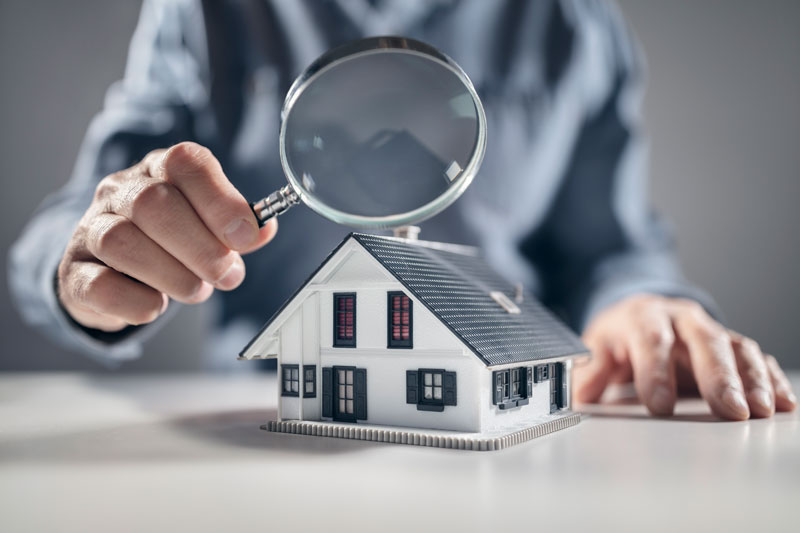Written by Rick Hayter | 10 April 2024
Acquiring a new property is an exciting and significant step in life, symbolising not only a tangible investment but also the promise of new beginnings. However, the process requires a practical assessment to ensure that your investment aligns with your expectations and future aspirations.
A pre-purchase property inspection check list is an indispensable tool for this endeavour, offering a systematic approach to evaluate the condition of a property. By carefully examining every aspect, from structural integrity to essential systems you will be empowered with the knowledge needed to make informed decisions, mitigate potential risks, and even negotiate a discounted price.
The most expensive home maintenance issues to address can vary depending on several factors, including the location of the home, its age, and the level of maintenance it has received over the years. However, the most common and potentially costly issues include:
Foundation problems
If your home’s foundation is compromised, it can lead to serious structural issues. Repairing or replacing a foundation can be a significant expense. Some signs that may indicate foundation problems include;
- Cracks in the Foundation or Walls: Interior walls, check for cracks, especially near doors and windows. Exterior walls, inspect the foundation for cracks, especially if they are wider than a quarter of an inch.
- Uneven Floors: walk through each room and note if the floors feel uneven or sloping.
- Doors and Windows Misaligned: difficulty in opening or closing doors and windows could be a sign of foundation issues.
- Gaps Around Windows and Doors: check for gaps between the doors/windows and their frames, or where walls meet ceilings.
- Sticking Windows and Doors: windows and doors that stick or jam could be a result of a shifting foundation.
- Cracks in the Drywall: look for cracks in the drywall, especially in corners of rooms or above doors and windows.
- Exterior Brickwork or Siding Issues: cracks or gaps in exterior brickwork or siding can indicate foundation movement.
- Basement or Crawlspace Issues: inspect the basement or crawlspace for signs of water damage, cracks, or shifts.
If you notice any of these signs, it’s advisable to hire a professional building inspector or a structural engineer to assess the severity of the issue. They can provide a more accurate diagnosis, costing and recommend appropriate solutions.
Roof damage
A damaged or aging roof can result in water leaks, structural damage, and even mould issues. Roof repairs or replacements can be expensive, especially if the damage is extensive.
Termite damage
Termites can cause significant damage to the structural integrity of a home, often going unnoticed until the damage is severe. Treating termite infestations and repairing the resulting damage can be costly.
While a professional building inspection is the most reliable way to identify termite damage and infestations, there are some signs you can look for on your own. Keep in mind that these are not foolproof, and if you suspect termites, it’s best to consult with a pest control professional for a thorough inspection. Potential signs of termite activity include:
- Mud Tubes: termites often build mud tubes to travel between their nest and a food source. These tubes can be found along walls, foundations, and other surfaces. They are typically about the width of a pencil.
- Wood Damage: look for hollowed or damaged wood, especially in areas where wood comes into contact with soil. Termites can consume wood from the inside, leaving a thin veneer that may appear normal on the outside.
- Swarmers: flying termites, also known as swarmers, may indicate an active colony. These termites are often mistaken for flying ants. Termite swarmers have straight antennae, equal-sized wings, and a broad waist, while flying ants have elbowed antennae, wings of unequal length, and a narrow waist.
- Discarded Wings: after swarming, termites shed their wings. Finding discarded wings near windowsills, doors, or in spider webs could be a sign of a termite infestation.
- Noises in Walls: termites are generally quiet, but you may hear a rustling sound if they are in large numbers. This is not a common sign, and other pests or issues could also cause such sounds.
- Blowholes in Trees: if you have trees close to your home, check for small holes in the trunk. Termites may create these holes, and their presence in trees near the house could increase the risk of an infestation.
- Droppings (Frass): “Frass” refers to the fine powdery debris or excrement produced by insects, especially wood-boring insects or certain types of larvae. It is commonly found near the nests or feeding areas of insects and can be composed of chewed-up wood particles, soil, or other materials depending on the insect species. The term is often used in the context of pest control and the identification of insect infestations, particularly in structures made of wood.
If you observe any of these signs, it’s important to consult with a pest control professional promptly.
Plumbing issues
Water damage from leaking pipes or plumbing problems can lead to extensive repair costs. Addressing issues such as burst pipes, water heater failures, or sewer line problems can be expensive.
Mould remediation
Mold can be a serious health hazard and can also cause damage to the structure of a home. Removing mould and addressing the underlying moisture issues can be a costly process.
- Visible Mold Growth: mould often appears as discoloured patches on walls, ceilings, or other surfaces. It can be black, green, brown, white, or even orange. Pay attention to any areas that seem damp or have a musty odour.
- Musty Odour: A persistent musty smell, especially in areas like basements, crawlspaces, or bathrooms, may indicate mould growth. Even if you can’t see the mould, the smell is a significant indicator.
- Water Stains: stains on walls or ceilings, especially those that are spreading or changing in appearance, may indicate water leaks and potential mould growth. Investigate and address the source of the water.
- Peeling or Discoloration of Paint: mould can cause paint to peel or discolour. If you notice bubbling, cracking, or changes in the colour of painted surfaces, it could be a sign of moisture and mould.
- Increased Allergy Symptoms: mould spores can trigger allergic reactions. If you or your family members experience an increase in allergy symptoms like sneezing, coughing, or congestion, it could be related to mould exposure.
- Condensation: excessive condensation on windows or other surfaces can create a conducive environment for mould growth. Addressing humidity issues can help prevent mould formation.
- Deterioration of Materials: mould can cause materials like wood or drywall to decay. If you notice any structural deterioration or a weakening of materials, it may be due to mould.
- Leaks or Water Damage: Any evidence of water leaks or water damage, such as stained or discoloured ceilings and walls, should be investigated promptly. Mould can develop in damp areas within 24-48 hours.
If you notice any of these signs, it’s essential to address the moisture source and remove the mould promptly. Small mould issues can often be handled with DIY methods, but larger or persistent problems may require professional mould remediation. Keep in mind that mould can have adverse health effects, so it’s important to take action promptly if you suspect its presence in your property.
Electrical problems
Faulty wiring or outdated electrical systems can pose safety risks and may require rewiring or updating the electrical system, which can be expensive.
HVAC system failure
Replacing or repairing a heating, ventilation, and air conditioning (HVAC) system can be a significant expense, especially if the system is old or needs a complete overhaul.
A malfunctioning HVAC (Heating, Ventilation, and Air Conditioning) system can lead to discomfort and potential safety issues. Key points to check if you suspect an HVAC system failure:
- Airflow Issues: check if there is reduced airflow from the vents. This could be caused by a clogged air filter, blocked ducts, or an issue with the blower motor.
- Strange Noises: unusual sounds like banging, rattling, or squealing may indicate a problem. These noises can be caused by issues with the blower, motor, or other components.
- Inconsistent Heating or Cooling: if certain areas of your home are not heating or cooling properly, it could be a sign of a problem with the HVAC system. This might be due to issues with the thermostat, ductwork, or the system itself.
- Thermostat Malfunctions: check if the thermostat is functioning correctly. Incorrect temperature readings, failure to respond to adjustments, or a blank screen could indicate a problem with the thermostat.
- Leaks or Moisture Around the System: Moisture around the HVAC unit could be a sign of a refrigerant leak or a drainage issue. Leaks should be addressed promptly to prevent further damage.
- Foul Odors: unpleasant odours coming from the vents could be a sign of mould or bacteria growth in the system, or it may indicate a problem with the ductwork.
- High Energy Bills: a sudden increase in energy bills without a corresponding increase in usage may suggest that the HVAC system is not operating efficiently. This could be due to a variety of issues, including a malfunctioning component or a clogged air filter.
- System Won’t Turn On or Off: if the HVAC system doesn’t turn on when it should or doesn’t turn off, it could be a problem with the thermostat, wiring, or the system itself.
- Frozen or Iced Components: ice buildup on the evaporator coil or other components can indicate a refrigerant problem, airflow issues, or other malfunctions.
- Age of the System: consider the age of your HVAC system. If it’s nearing the end of its expected lifespan (typically 15-20 years for many systems), it may be more prone to failures.
If you encounter any of these issues, it’s advisable to contact a licensed HVAC professional for a thorough inspection and repair.
To mitigate the risk of facing these expensive issues, regular home maintenance, inspections, and addressing problems promptly can help prevent small issues from turning into major, costly problems. Regularly inspecting your property and addressing any maintenance needs can save you money in the long run by preventing larger issues from developing.




